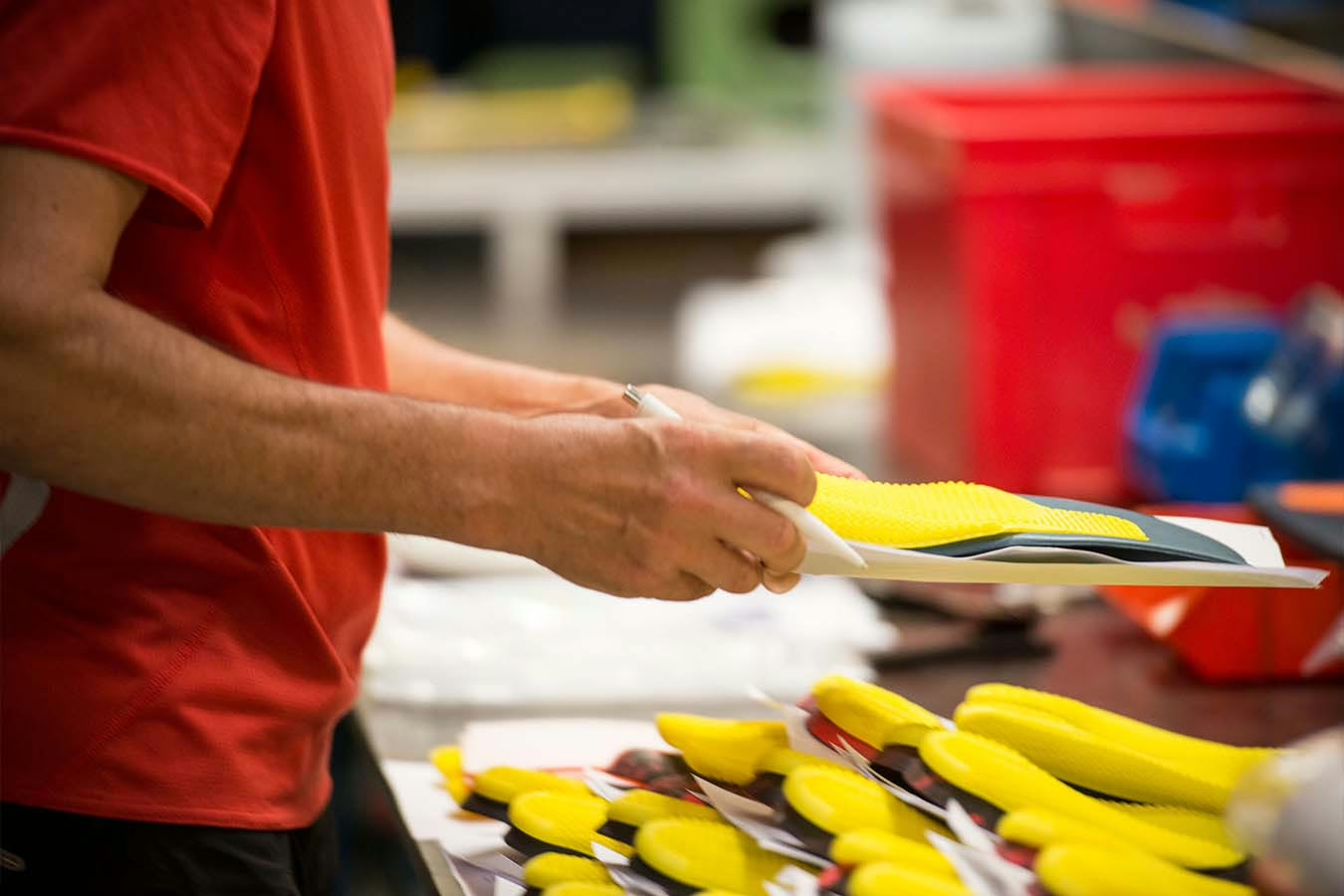At Runners’ lab you can not only find quality running shoes.Good shoes cannot solve every problem, which is why orthotics can also be professionally measured and made at our facility. Do you benefit from orthotics?
Are orthotics necessary for everyone?
Custom orthotics can provide a solution to a variety of complaints. However, there is no list of complaints that specifically indicate a need for orthotics. Whether or not you will benefit from this extra support to the foot must be looked at individually. Sometimes it is assumed a little too quickly that someone needs an orthotic, but it is important to wear one only when it is effectively needed. A nice comparison to make here is that of antibiotics: for some it is a must, but someone who does not need it, can become resistant to its effect. No conclusive scientific evidence has been found yet, but using orthotics can make your foot muscles lazy.
Conditions for making orthotics
When clients come to us with a prescription from a doctor or specialist, we can surely make them at Runners’ lab. In all other cases, we are going to look at your shoes first. In fact, a good shoe can already solve many problems, such as muscle strengthening exercises can. If both issues can be ticked off, only then do we move on to orthotics.
With children, however, this is slightly different.When they are not yet fully grown, it is normal that their feet or lower legs are not strong enough yet, or able to provide sufficient stability. Consequently, we do not make orthotics for children under the age of seven at Runners’ lab unless they have a prescription from a doctor or specialist. This is because their growth process can still be affected too much, even in a negative way. For adults, a prescription is not a must.
How are orthotics measured at Runners’ lab?
At Runners’ lab, orthotics are dynamically measured using our advanced Footscan® technology.It measures your footprint when you are in motion. This is important because the orthotic must also support you sufficiently when you are moving. A static measurement does not provide enough information about the foot in motion, which is not unimportant. If you need the orthotics for daily use, walking barefoot over the pressure plate is sufficient.With orthotics for sports, the barefoot analysis is done while walking as well as running.
When measuring orthotics, the shoes for which they are intended are also taken into account.This is to determine the fit of the sole. If your shoe is relatively narrow or wide, this will help determine which type of sole we will make for you. So be sure to bring your shoes, unless you also need new shoes. In that case it is better to firstmake an appointmentfor new orthotics and postpone your shoe purchase for a while until the orthotics are ready.
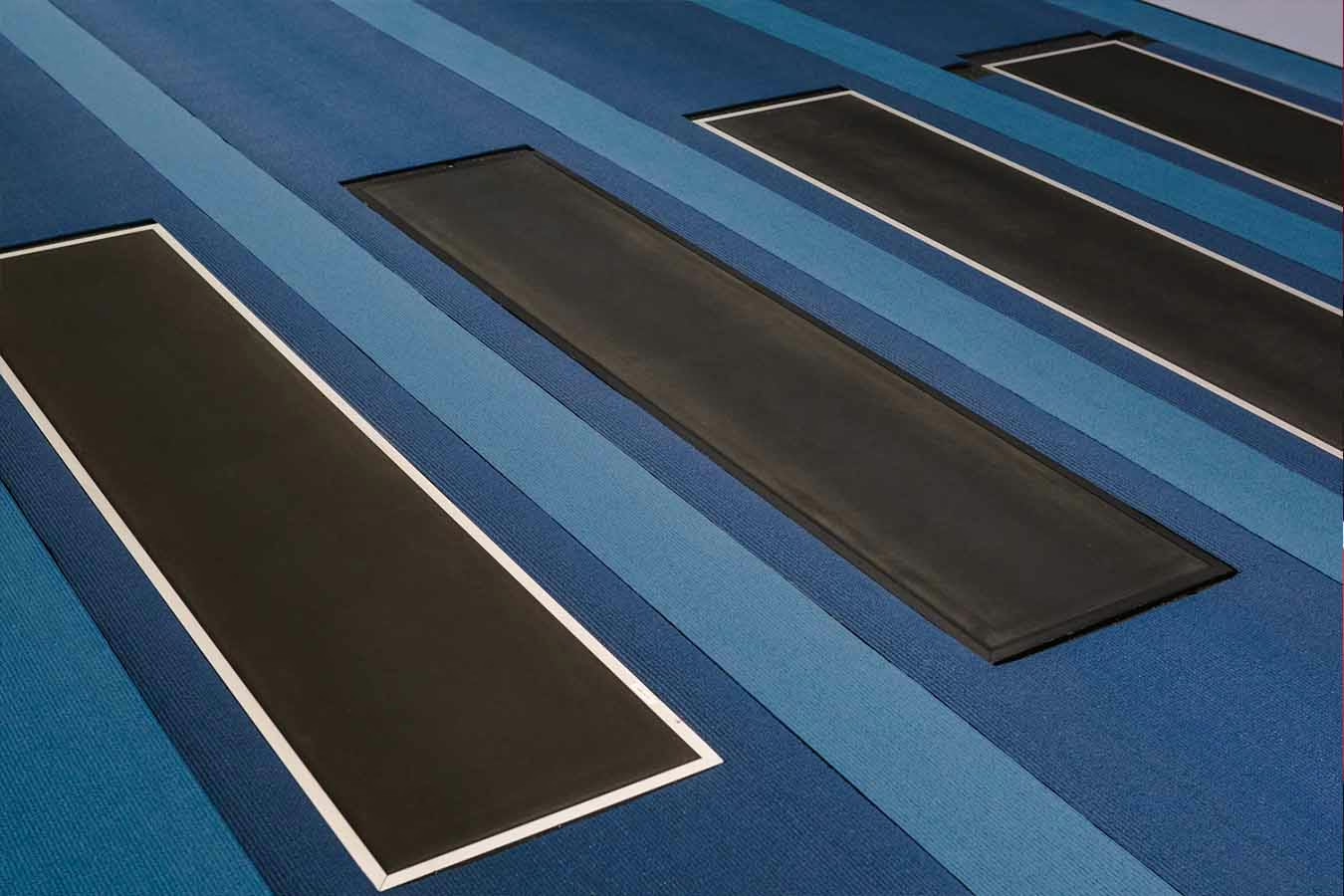

Two types of orthotics at Runners’ lab, both custom-made
Every type of orthotic we make at Runners’ lab is purely custom-made and is based on your personal dynamic measurement.However, we make two types of orthotics: D3D and Phits orthotics. Which type is best for you depends on factors such as purpose, complaints, foot profile….and are therefore not always under your control. In addition, both models can also play with the firmness and density of the material. This is chosen according to body weight, load, application, use… The color of your orthosis corresponds to the strength of the material, so it is not up to you to choose.So what exactly are the differences between the two types of orthotics?
D3D orthotics
D3D orthotics are purely handcrafted and made entirely by hand. They consist of EVA material, the cushioning material often found in running shoes. A big advantage of this type of sole is the adaptability afterwards.Because they are handmade, the soles can easily be edited or reinforced afterwards. However, D3D orthotics do not last as long as Phits orthotics. When D3D orthotics are “used up,” they are effectively “used up,” whereas with Phits, the base of the sole is much stronger and therefore less likely to wear out. The cost of this D3D sole is 129 euros, excluding any special modifications.
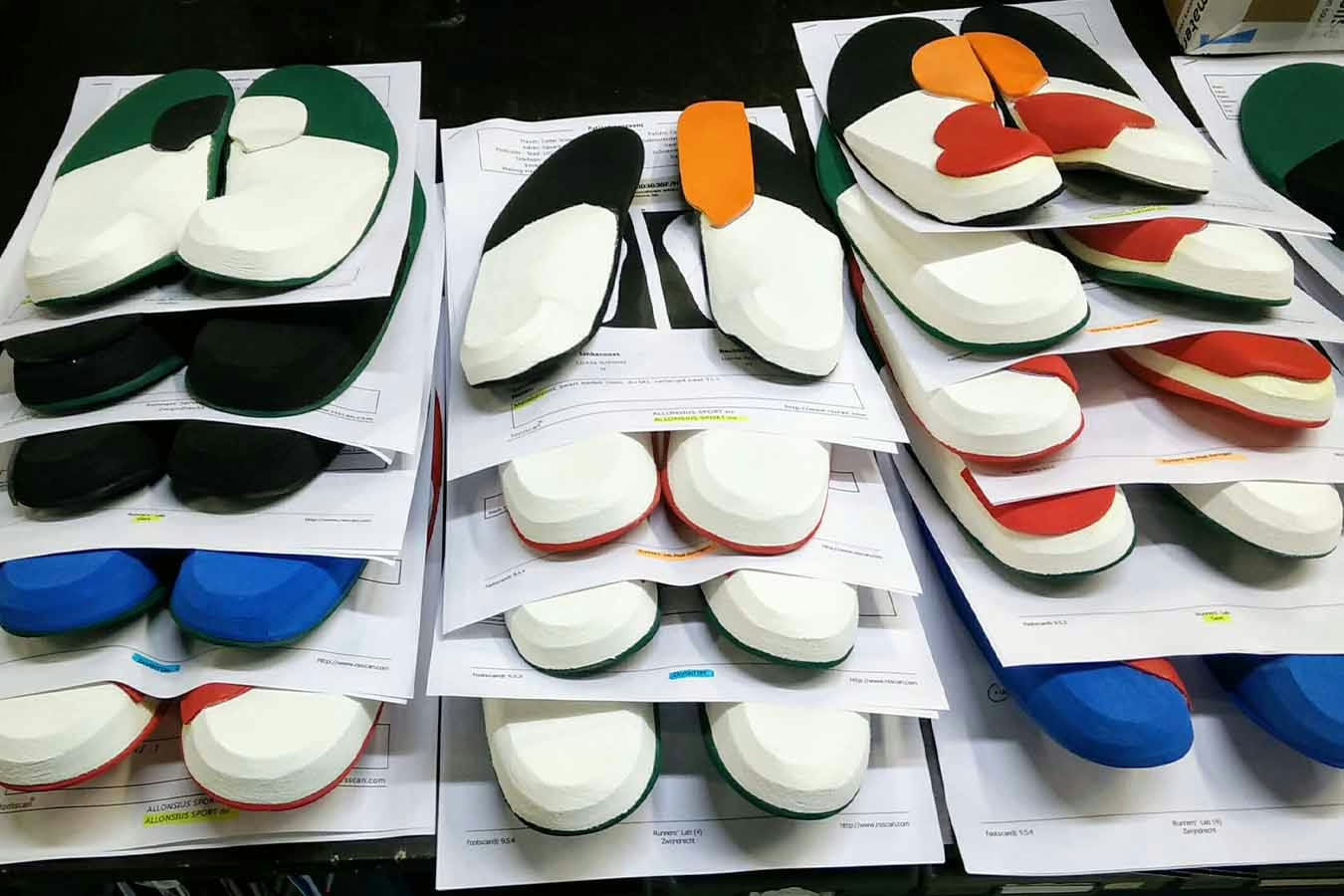
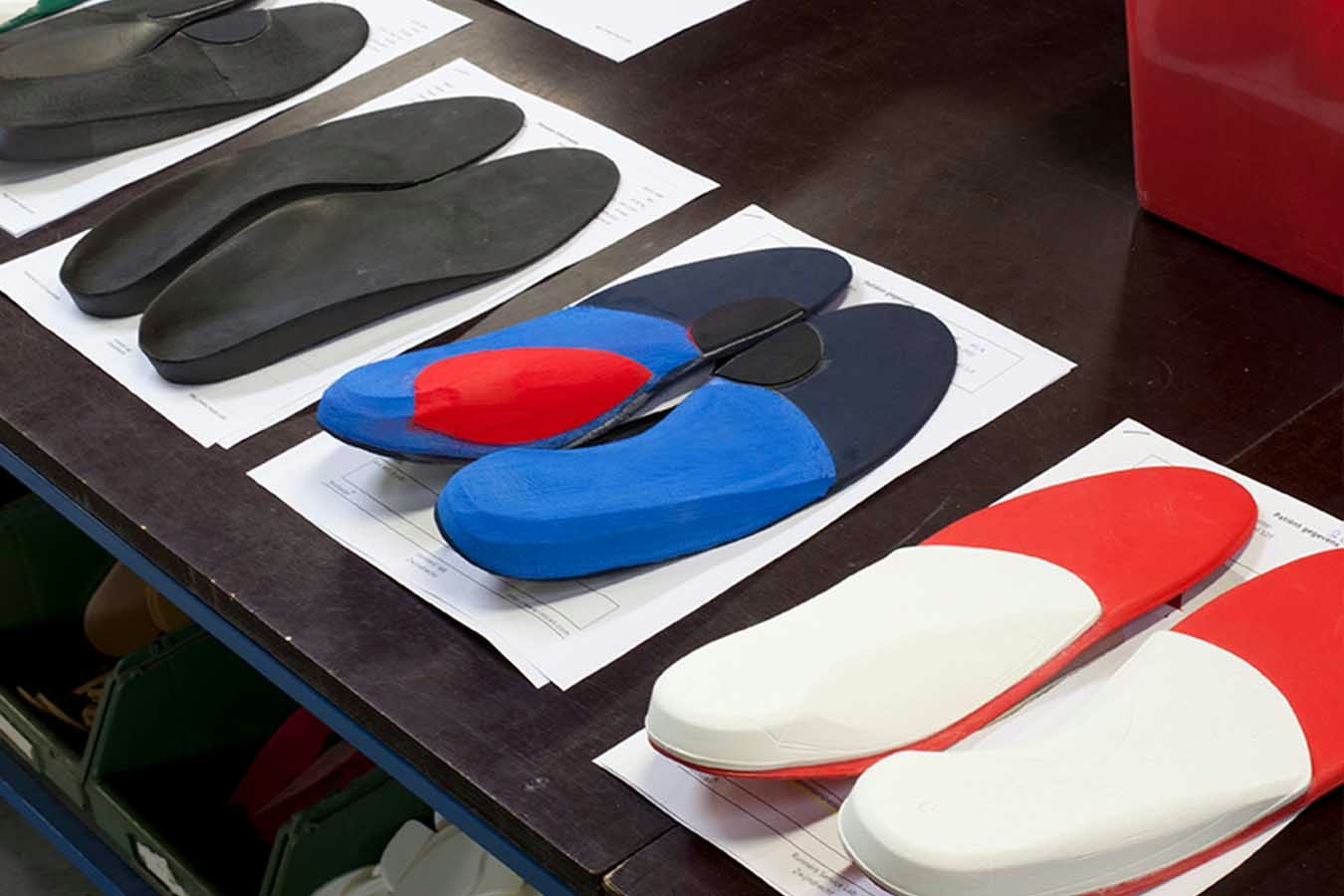
Phits orthotics
After we prepare the design, Phits orthotics are 3D printed at Materialise Motion, formerly RS Print and a sister company of Runners’ lab. Based on your personal measurement, a solid grid structure is printed. A container is filled with polyamide that you can simplistically imagine as a container of sand. A printer then starts to harden particles of the polyamide layer by layer, eventually creating a structure in three dimensions.The resulting lattice structure is thinner, lighter and more durable in both senses of the word than the base in D3D orthotics.By the way, the excess and uncured polyamide is part of an ecological cycle as it can be reused in other applications.
The lattice structure then comes back this direction so that a top layer is applied in the workshop. In contrast to the D3D orthotics, the top layer can easily be renewed in case of wear.Retrofitting, however, is less obvious with this type of orthotic. The delivery time is also slightly longer than with D3D orthotics, as is their lifespan. The cost also differs as the price of Phits orthotics is 169 euros.
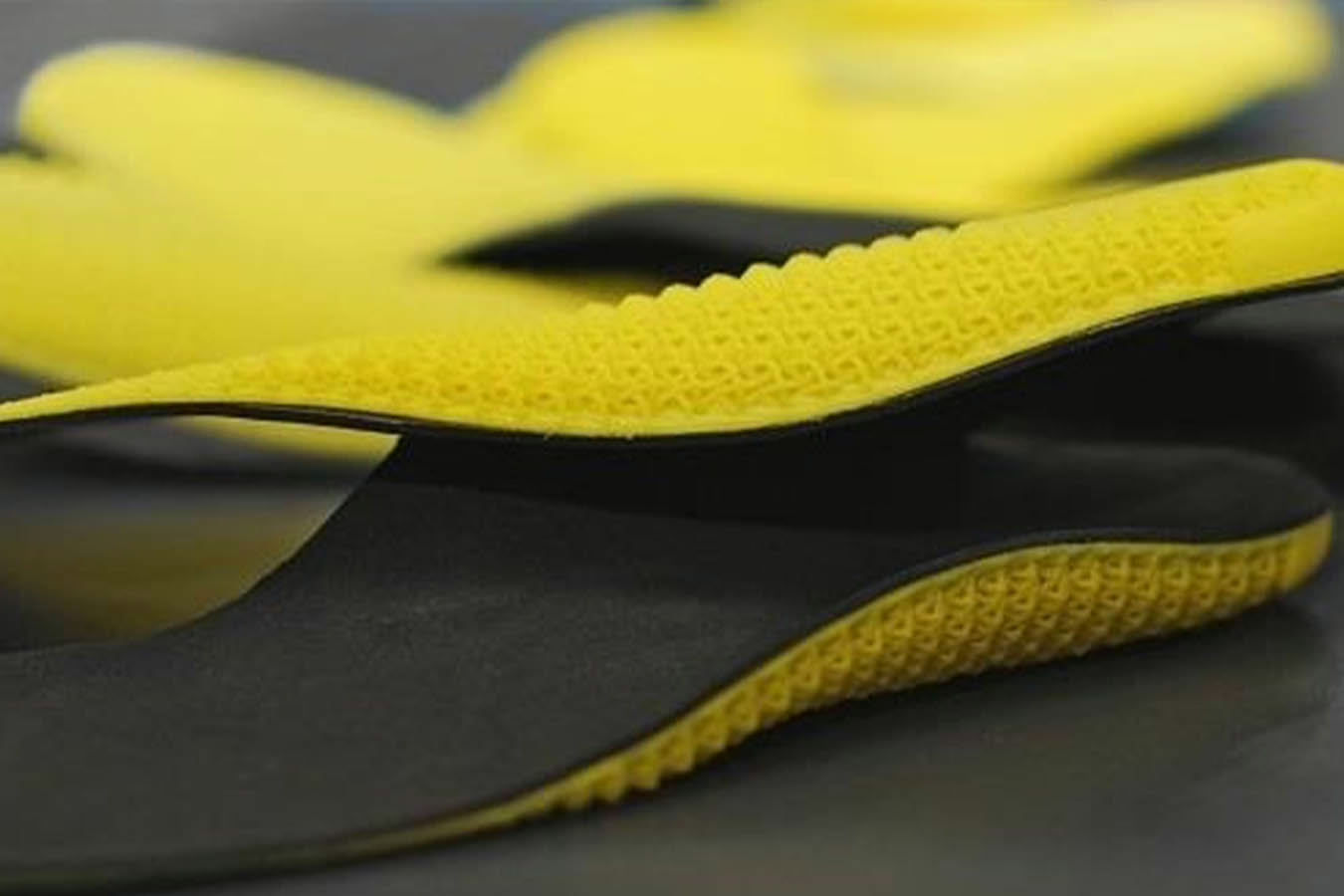
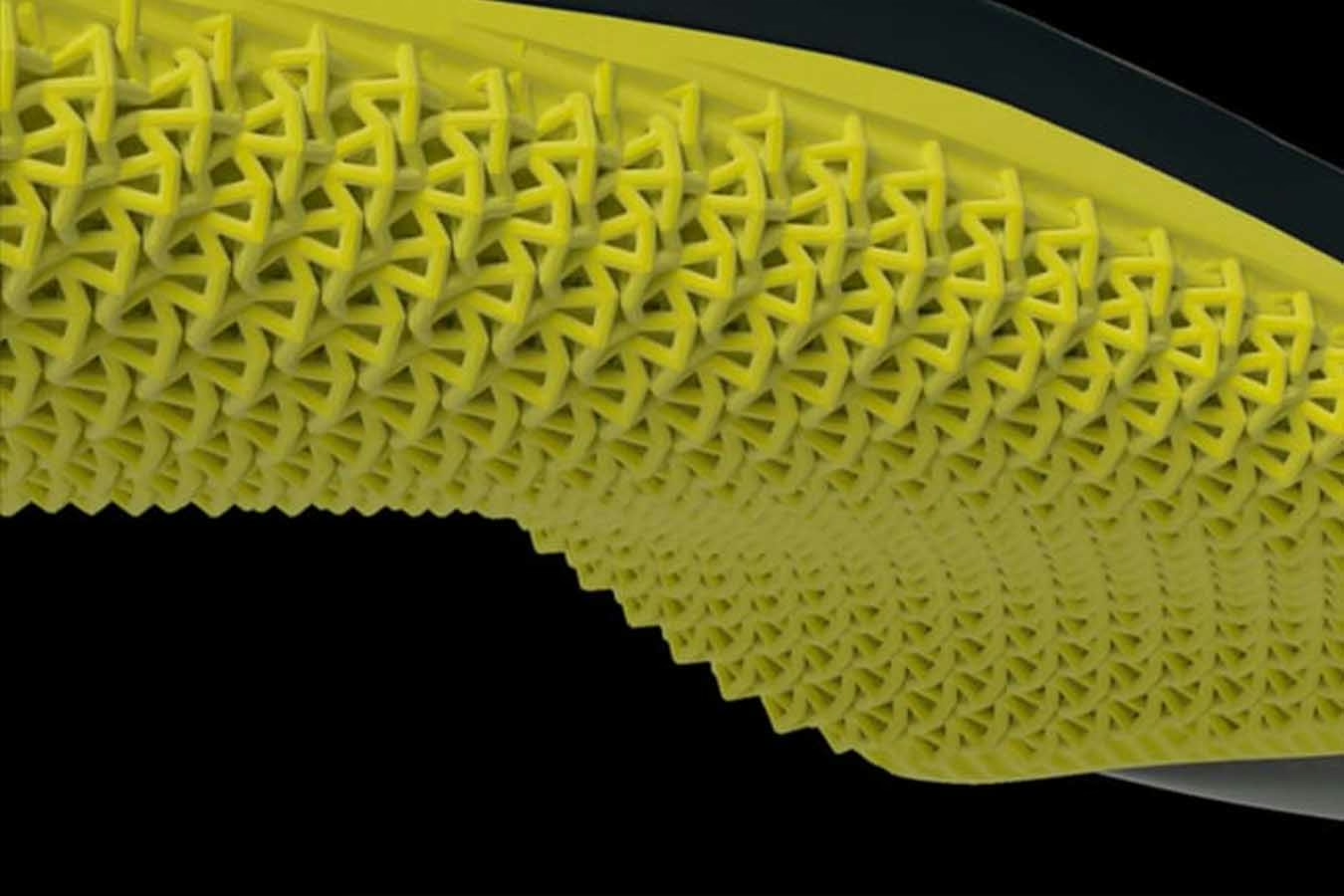
Breaking in new orthotics
Your orthotics have been measured, the design created and worked out in a workshop. So the orthotics are ready to use. Now what?Slowly build up the use of your orthotics. After all, your body needs to get used to that extra support. Wear them for a few hours and then give your body a few hours of rest by removing them from your shoes.Don’t go out for a long walk or run with your new orthotics.
How long it takes to get used to your new orthotics is difficult to determine. Generally, three weeks is given as a guideline, but for some, it can take up to six weeks. Wear the orthotics only when you effectively need them, that is, in the conditions in which you experience the most impact or strain.
Blisters are unfortunately not always avoidable with new orthotics, especially sports orthotics. These generally provide just a little more firmness and support, which can lead to irritation.Often this is a transitional period and you will notice improvement after a while. Wearing good socks can take away some of the problem. If the soles still continue to cause irritation, make a new an appointment at Runners’ lab so we can see what’s possible.
Durability and wear of orthotics
A rule of thumb that is often given is that orthotics for running last about two pairs of running shoes (about 2,000 kilometers). If you use your orthotics for both everyday use and sports, you should expect them to last about a year, depending on how intensively you use them. In some cases, the return of old ailments may indicate wear and tear. Not sure? Then have it checked out at Runners’ lab. Our consultants can often tell by the condition of the top layer and the tub shape whether they need renewal. If necessary, we may already make a second pair so you can alternate the old and new orthotics.This way you can run in the new pair before your old pair breathes its last.
Note that orthotics can also be something temporary. If you wear orthotics now it does not mean you will always need them. Making your body stronger may make their use unnecessary. If you need new orthotics, it is best to come in each time to re-measure your foot and walk/run pattern. In fact, you may no longer need orthotics, or the design may need to be adjusted. At Runners’ lab, we do keep track of all designs, so if desired, we can make identical insoles without a visit to the store.
FAQs
Do I need a prescription to have orthotics made at Runners’ lab?
Children need a prescription from a doctor or specialist, for adults this is not a requirement. Some health insurance companies do require a prescription to use their reimbursement system. However, the reimbursement system with mutual health insurances is very diverse and can even differ from region to region. Whether you can count on a reimbursement from your health insurance fund can normally be found on their website.
Can I only have orthotics measured at Runners’ lab that are intended for running?
No. We make orthotics for everyday use as well as for sports. Nor are we limited only to runners or walkers. At Runners’ lab, we can make orthotics for almost any sport in which shoes are worn. Cyclists, basketball players, soccer players and even skiers are welcome to join us.
How much does orthotics cost to make and measure?
The price of orthotics depends on the type of orthotic you have made. The D3D orthotics cost 129 euros. The cost of Phits orthotics is 169 euros.
Do I need to make an appointment at Runners’ lab for orthotics?
Preferably yes, since a podiatrist is not available every day in every branch to measure orthotics. With an appointment, you can be sure that someone with the right knowledge can help you and you won’t have to wait. You do not need to make an appointment to pick up orthotics. As soon as you receive an email telling you that your orthotics are ready, you may pick them up during opening hours.
What should I do if I need new shoes in addition to orthotics?
If you also need (new) shoes, it is advisable to first have your orthotics made and wait until they are ready before purchasing new shoes.That way, the orthotics can be completely tailored to your personal foot profile and we can recommend the most suitable (running) shoes combined with your new orthotics.
What should I bring when I have an appointment at Runners’ lab for orthotics?
Be sure to bring the shoes you want to wear the orthotics in. These can be running, walking, work or everyday shoes. Do you currently wear orthotics or have you worn them in the past? Be sure to bring these as well.
How are orthotics measured at Runners’ lab?
At Runners’ lab, orthotics are dynamically measured using our advanced footscan® technology.You will be asked to walk and/or run barefoot over the pressure plate, depending on the application for which the orthotics are intended.
Can I determine the color of my orthotics?
No. The color of the orthotic depends on the firmness and density of the material. The podiatrist who makes the orthotic will determine this according to weight, load, application and use.However, the type of orthotic (D3D or Phits) can sometimes be chosen in consultation.
What should I bring with me when I come to pick up my orthotics?
When picking up your orthotics, it is best to bring the shoes in which you will wear the orthotics. The orthotics can then be tried on immediately in the shoes and touched up a bit if necessary.
Can I use my orthotics for sports as well as everyday use?
It can be done, but it is not ideal. If it is for continuous use, we recommend having one pair made for daily use and one pair for sport activities. The load in daily activities may be different from the load during exercise, so the support must also be different. It is also less obvious to make an orthotic that fits both your everyday shoes and your running shoes perfectly. Yet a third important reason is hygiene. If you’ve just been exercising with your orthotics, it’s not always so hygienic to wear them in your everyday shoes right afterward.
Is it normal for new orthotics to feel uncomfortable and blisters to develop?
Yes, not for everyone but it happens regularly. Your body is not used to that extra support. So you have to go through a transition period during which (for some) blisters unfortunately cannot always be avoided. Do the orthotics still feel uncomfortable after a few weeks? If so, feel free to make another appointment so we can adjust the orthotics if necessary (free of charge).
How should I maintain my orthotics? Can I put these in the washing machine?
No. As with running shoes, putting them in the dryer or washing machine is strongly discouraged. Use only some lukewarm water and a brush to clean them. Also, do not place them on a heat source to dry them, as they may deform. Let them ventilate well after use and remove them from your shoes, especially if they are wet. If necessary, you can use a maintenance product. Also, wear good socks for better hygiene.
Any questions? Contact our advisors via the WhatsApp Live Chat.
After reading this article, do you still have questions regarding orthotics. Then do not hesitate to contact our WhatsApp team via the WhatsApp Live Chat. You can reach them from Monday to Saturday, between 9:30 a.m. and 6 p.m. at +32 479 05 65 99. Do you have a question outside the office hours? Feel free to send your question via chat and the team will answer your question as soon as possible.
